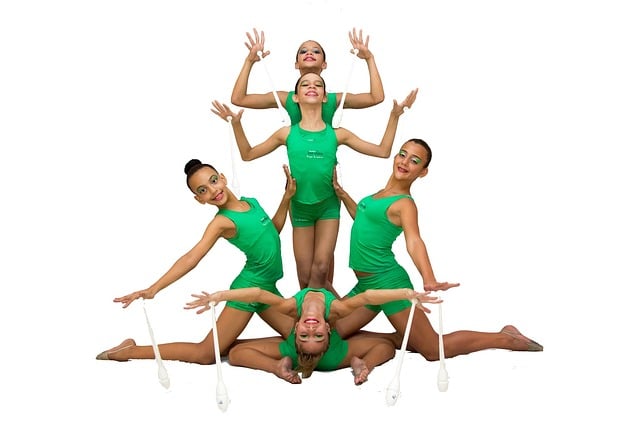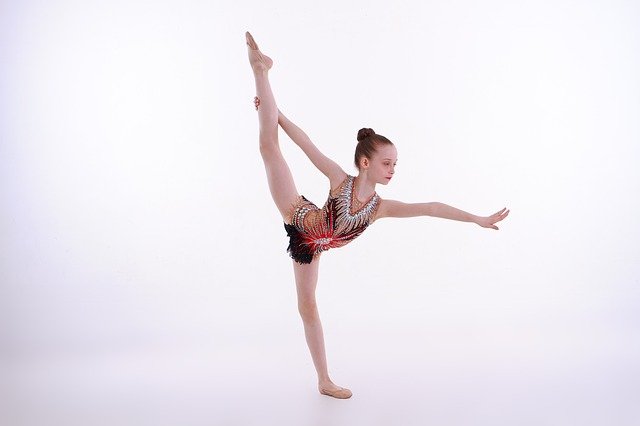
Rhythmic gymnastics is practiced with background music and may include the use of apparatus.
Gymnastics is a discipline that can be developed recreationally or in competition, which seeks to promote the development, strengthening and flexibility of the body through various physical exercise routines. Rhythmic , for its part, is that linked to rhythm : the proportion between repetitions, pauses and accents in music, or the rhythmic order in a series of elements.
Rhythmic gymnastics is a gymnastic specialty that, with background music and often resorting to the use of apparatus, uses dance steps in the development of its routines. It is a sport whose first official competitions took place in the second half of the 20th century .
Rhythmic gymnastics competitions
In rhythmic gymnastics, the athlete must develop a setup while maintaining rhythm in his movements . The gymnast has to demonstrate his technique and satisfy the aesthetic requirements of the jury.
Generally, rhythmic gymnastics competitions consist of tests lasting between 75 and 150 seconds (depending on whether they are individual or group), in which participants must perform their routines on a track. In addition to being present in the Olympic Games , the discipline has its own World Cup and its World Championship .
Use of devices
When rhythmic gymnastics includes the use of apparatus, it may be hoops , clubs , ropes , ribbons or balls . The score is established according to the difficulty of the movements, the combination of rhythmic steps, body expression and other criteria. Additionally, penalties may apply.
Globally, Eastern European countries tend to dominate rhythmic gymnastics competitions, although Spain and Italy have also stood out in recent decades.

Rhythmic gymnastics can be developed competitively, as physical training or for recreation.
Rhythmic gymnastics as training
Although gymnastics is one of the most attractive activities for children at school, since it allows them to channel much of their energy in a healthy and natural way while helping them eliminate the stress of student pressures, The professional field is very different. This does not mean that thousands of people are interested in rhythmic gymnastics, but it is important to make good decisions from the beginning.
One of the disadvantages of rhythmic gymnastics compared to other forms of physical training is that you cannot learn it on your own, in the comfort of your home, unless you want to make it a professional career. For this reason, the first step for those who want to enter this world is to find an institute that seems reliable and whose prices are affordable.
Where to learn the discipline
Since rhythmic gymnastics is not very common, we generally do not come across people who practice it and this makes initial inquiries difficult. However, a good Internet search can guide us in a matter of minutes. Among the points to take into account is the safety of the facilities: we must know the condition and maintenance of the work tools , ask if the walls are padded and make sure that their hygiene policy is appropriate to our needs.
The safety and cleanliness of the facilities are fundamental aspects, which should directly affect our decision. However, we must never forget the emotional level: we are living beings, and for that reason we must find coaches with whom we feel comfortable, who respect us and encourage us to self-improve. Chemistry in this case is decisive, and that is why we should not stop talking to the staff before enrolling in an institute.
In this same framework, we must remember that rhythmic gymnastics is not something that we can learn and master overnight. Therefore, we must allow our body to adapt little by little.
